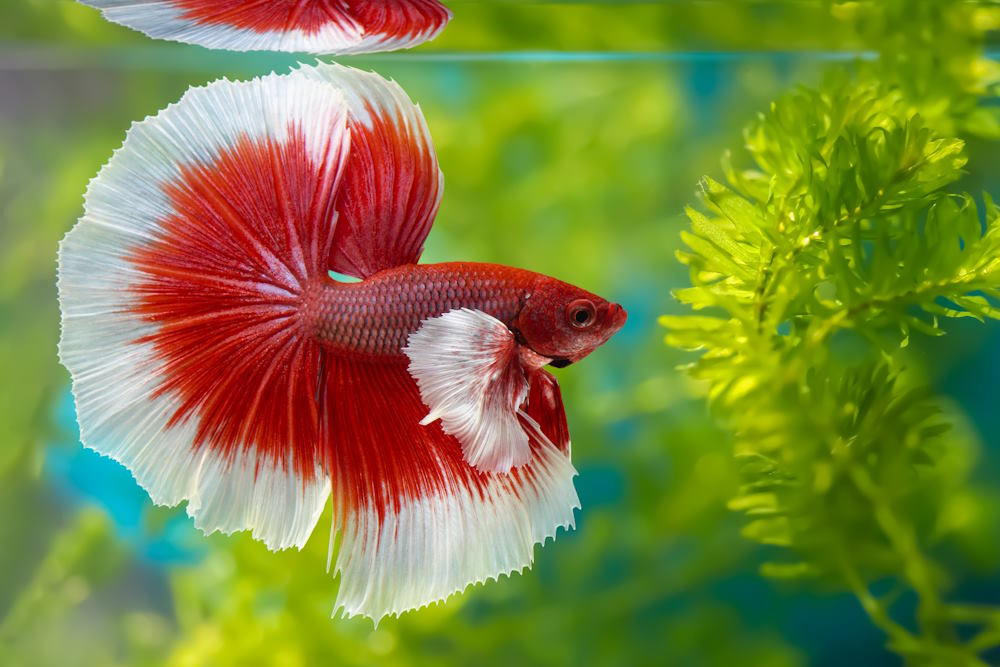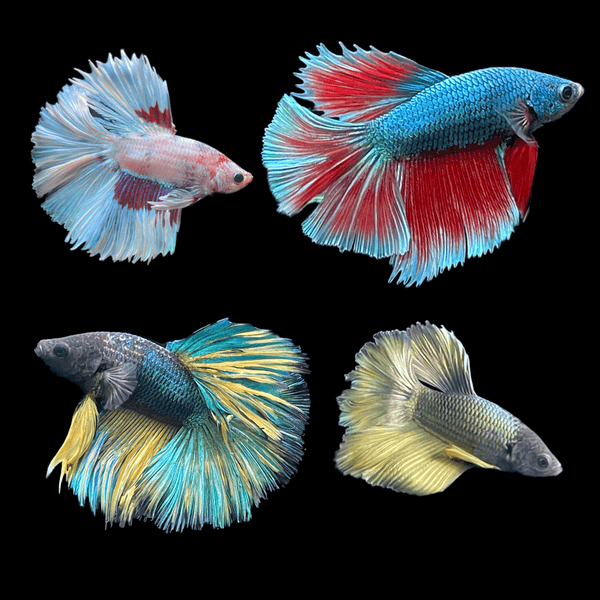Just how to Choose the Right Betta Fish for Your Fish tank
Just how to Choose the Right Betta Fish for Your Fish tank
Blog Article
Everything About Betta Fish: Recognizing Their Unique Demands, Behavior, and the very best Practices for Optimal Care
Comprehending the distinct requirements and habits of Betta fish is necessary for any kind of aquarist aiming to provide ideal treatment. These fascinating creatures, belonging to the cozy waters of Southeast Asia, show distinctive territorial tendencies and need particular environmental problems to grow. From picking the right storage tank dimension to acknowledging prospective health issues, different variables dramatically influence their wellness. As we explore these elements even more, the implications for both amateur and seasoned fish caretakers come to be increasingly apparent, questioning regarding just how best to accommodate these remarkable fish in our homes.
Betta Fish Introduction
Although frequently appreciated for their vibrant shades and streaming fins, Betta fish, clinically recognized as Betta splendens, are intricate animals that require details like prosper. Originating from Southeast Asia, these freshwater fish are understood for their territorial nature and one-of-a-kind behaviors. Betta fish show sex-related dimorphism, with males displaying a lot more vivid colors and longer fins than females.
Their hostile tendencies, particularly among males, necessitate mindful factor to consider when real estate them. Bettas are usually kept in single-specimen tanks to avoid territorial disagreements. However, they can coexist peacefully with certain compatible species in bigger community tanks, gave the environment fulfills their requirements.

To make certain optimal care, aquarists must comprehend their unique behavior attributes, dietary demands, and habitat requirements. betta fish. With correct attention, Betta fish can exhibit their lively individualities and flourish in a well-maintained fish tank setup
Natural Habitat and Atmosphere
Betta fish flourish in a varied series of all-natural environments, largely located in the superficial waters of Southeast Asia, consisting of rice paddies, swamps, and slow-moving streams. These environments are identified by cozy temperature levels, usually between 75 ° F and 82 ° F(24 ° C and 28 ° C ), and a pH level varying from 6.5 to 7.5, which is suitable for their health and wellness and health.
In their all-natural environments, Betta fish are accustomed to thick plant life, giving both shelter and breeding grounds. The presence of plants such as drifting water lilies and thick lawns not just uses defense from killers however also adds to the oxygenation of the water, which is vital for their respiratory system demands. Additionally, these environments often have locations of still water, allowing Betta fish to exhibit their natural actions such as bubble nesting.
Comprehending the all-natural habitat of Betta fish is critical for fish tank lovers. Replicating these problems-- through water temperature, pH equilibrium, and the inclusion of real-time plants-- can significantly boost the total health and longevity of these captivating fish, guaranteeing they grow in a home fish tank setting.
Social Habits and Communications
Comprehending the social actions and communications of Betta fish is essential for successful aquarium management. Betta fish, or Siamese battling fish, are known for their special behavior attributes, characterized largely by territoriality and aggression. Males, specifically, present extremely hostile behaviors towards each other, bring about the notorious online reputation of Betta fish as fighters. In a confined room, two males can participate in fierce conflicts, usually leading to injury or death.
On the other hand, women Bettas show less aggressive habits and can exist together in teams, referred to as sororities, if introduced properly. It is vital to monitor their communications closely, as hierarchy and prominence can lead to disputes. Recognizing the click here for info characteristics within a Betta community is important; establishing hiding spots and making certain adequate area can alleviate hostility.
In enhancement, Betta fish may likewise present curiosity and social behaviors in the direction of various other species. While they can exist side-by-side with certain non-aggressive storage tank friends, it is vital to pick suitable varieties to stay clear of anxiety and hostility. Overall, acknowledging these social interactions is crucial to fostering a harmonious aquarium setting for Betta fish.
Vital Care Standards
Supplying correct take care of Betta fish is crucial to their health content and wellness. To make certain a successful environment, it is vital to preserve optimum water problems. The water temperature level must be maintained in between 76 ° F and 82 ° F(24 ° C to 28 ° C), while pH levels must vary from 6.5 to 7.5. Routine water changes-- roughly 25% regular-- help keep water high quality.
Betta fish call for an ideal container size; a minimum of 5 gallons is recommended to provide sufficient room for swimming and hiding. Consist of designs and plants to produce a revitalizing setting, but prevent sharp things that could harm their delicate fins.

Lastly, ensure the container is furnished with a filter to keep the water clean, but use a mild filter to prevent strong currents that can worry the fish. By complying with these crucial treatment guidelines, proprietors can advertise a healthy and balanced and lively Betta fish.
Common Wellness Issues and Solutions
In the care of Betta fish, awareness of common wellness concerns is important for maintaining their well-being. To treat fin rot, boost water conditions and think about making use of a broad-spectrum antibiotic.
One more typical disorder is ich, a parasitic infection identified by white spots on the fish's body (betta fish). Treatment involves increasing water temperature and adding fish tank salt to the container, as this can help get rid of the parasite
Swim bladder problem is also regularly observed, resulting in buoyancy issues. This condition may occur from overfeeding or bowel irregularity. A fasting period of 24-48 hours, adhered to by a diet of blanched peas, can offer relief.
Lastly, bettas may deal with velour illness, suggested by a gold dust-like appearance on their skin. Treatment normally needs medication specifically made for exterior parasites, together with improved tank health.
Routine tracking of water criteria, keeping a clean setting, and supplying a balanced diet are crucial preventive steps. By dealing with these health and wellness problems without delay, Betta fish can lead healthier, much more lively lives.
Final Thought
In summary, successful betta fish treatment needs an understanding of their unique needs and behaviors. Giving an appropriate setting, consisting of suitable container size and water conditions, is necessary for their wellness. Furthermore, recognizing their territorial nature and ensuring adequate hiding areas can avoid aggression. Normal monitoring of health and water useful link quality, in addition to a well balanced diet plan, adds to the durability and vibrancy of betta fish. Abiding by these standards will promote a flourishing aquatic ecosystem for these captivating creatures.
Report this page